Australia makes encouraging steps forward as worst-hit state ease from "stay home" to "stay safe"
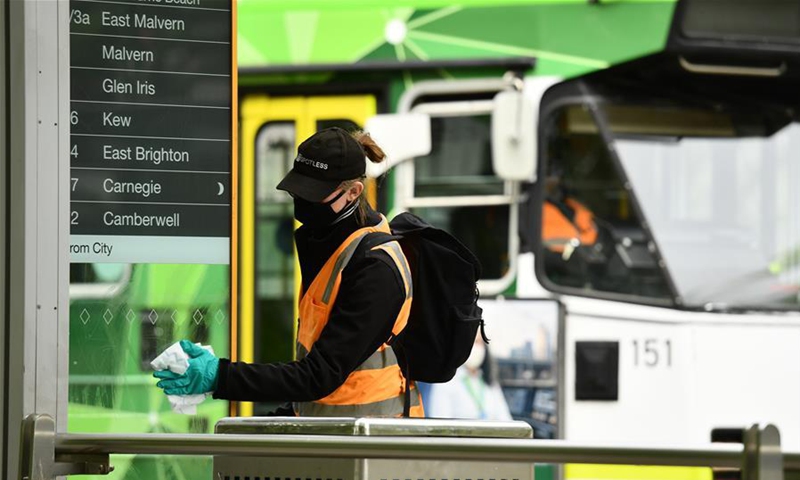
A worker wearing mask cleans the tram station in CBD of Melbourne, Victoria, Australia, on Oct. 19, 2020. After more than three months of lockdown, metropolitan Melbourne moved from second step to third step of restrictions, and regional Victoria continues in third step with further easing of restrictions from midnight of Oct. 27. The whole state recorded zero new COVID-19 infection and virus-related death for a second day in a row on Oct. 27. (Photo by Bai Xue/Xinhua)
Australia has made another encouraging step forward in its fight against COVID-19, as the worst-hit state of Victoria sees further ease of a wide range of restrictions and more states' borders are on track to reopen.
After more than three months of lockdown, metropolitan Melbourne will move from second step to third step of restrictions, and regional Victoria continues in third step with further easing of restrictions from midnight of Tuesday. The whole state recorded zero new COVID-19 infection and virus-related death for a second day in a row on Tuesday.
Under further eased restrictions, all retail businesses will reopen. Restaurants, hotels, cafes and bars will be able to host up to 50 patrons outdoors, 20 patrons inside. Home visits will be allowed, and limits on leaving the household will be lifted.
Weddings, funerals, religious ceremonies also had their attendance caps increased, as did outdoor fitness training sessions and public pools.
"These are big steps. We have all given a lot. I'm so proud and impressed and humbled by the contribution that so many Victorian families have made, so many Victorian businesses have made," Premier of Victoria Daniel Andrews said.
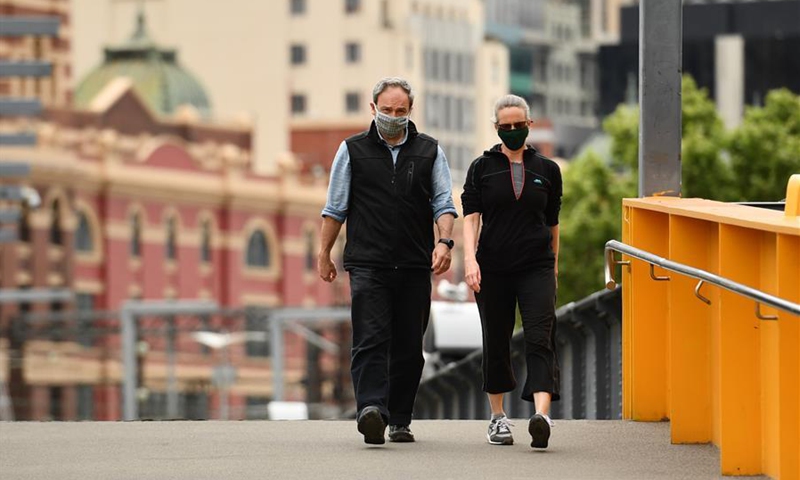
People wearing masks walk in CBD of Melbourne, Victoria, Australia, on Oct. 19, 2020. After more than three months of lockdown, metropolitan Melbourne moved from second step to third step of restrictions, and regional Victoria continues in third step with further easing of restrictions from midnight of Oct. 27. The whole state recorded zero new COVID-19 infection and virus-related death for a second day in a row on Oct. 27. (Photo by Bai Xue/Xinhua)
Andrews said more restrictions would be lifted from Sunday, November 8. The 25-km travel limit will come off and the border between Melbourne and regional Victoria will be removed, allowing intrastate travel again.
"We want to reach COVID Normal by Christmas and right now, we're on track to do that," he said.
On Tuesday, New South Wales (NSW) Premier Gladys Berejiklian has flagged the possibility to ease border restrictions with Victoria, as the state comes out of lockdown.
"We'll take the border down as soon as we can, but we do need to wait to see what impact easing of restrictions in Melbourne and Victoria has before we decide exactly when that will be," she said.
"The real test for NSW wasn't lockdown because it's easy not to spread the virus when everyone is confined to their home or has limited mobility," she said.
"But once you ease restrictions and people start moving around again, that's the real test."
NSW recorded two locally acquired cases on Tuesday, both were linked to known cases. Ten cases were also reported in overseas travellers in hotel quarantine.
It came after a total of 6,438 tests were conducted, bringing the total testing number in NSW to 3 million since the pandemic began.
While lauding the achievements, Berejiklian urged the community to remain vigilant.
"I want to thank everyone in NSW who has come forward to be tested - three million COVID-19 tests is an incredible result," she said.
"As we ease restrictions, it is critical that we maintain our high rates of testing which has been central to our success in limiting the spread of the virus and keeping NSW open."
Meanwhile, the state of Tasmania finally decided to open its borders to NSW from Nov.6.
Tasmania eased restrictions on visitors from elsewhere in the country with the exception of NSW and Victoria one day before, allowing them to enter the state without quarantine.
"What we want to see in a jurisdiction that we open up to is less than five cases of unknown transmission in the last 28 days," Tasmania's Premier Peter Gutwein said.
"New South Wales in the last 28 days has had six only in a population of nearly 8 million people, so they are on top of this."
He said the state was expected to welcome back Victorians from December 1, but would be responsive to the evolving situation.
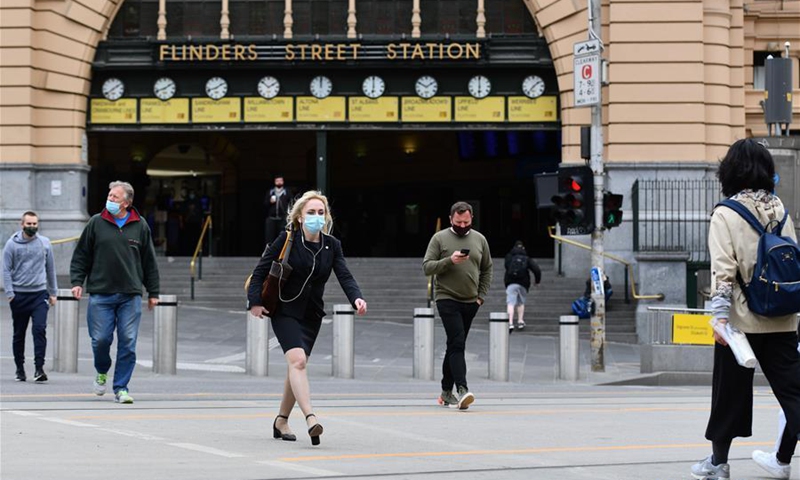
People wearing masks walk in CBD of Melbourne, Victoria, Australia, on Oct. 19, 2020. After more than three months of lockdown, metropolitan Melbourne moved from second step to third step of restrictions, and regional Victoria continues in third step with further easing of restrictions from midnight of Oct. 27. The whole state recorded zero new COVID-19 infection and virus-related death for a second day in a row on Oct. 27. (Photo by Bai Xue/Xinhua)
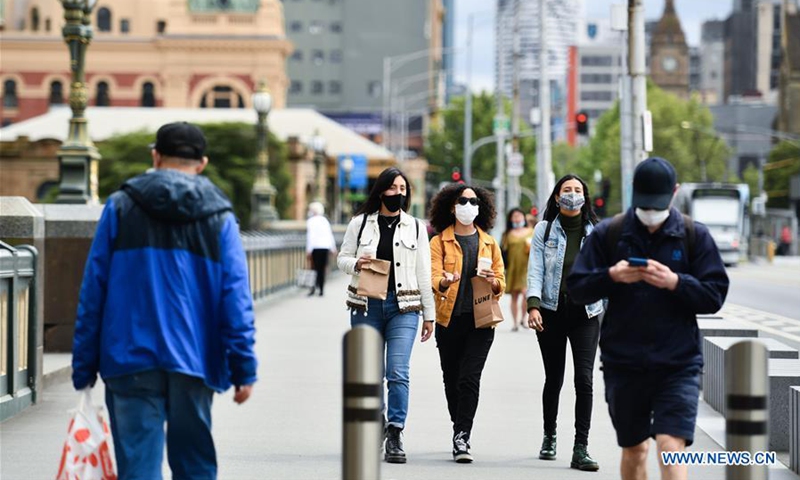
People wearing masks walk in CBD of Melbourne, Victoria, Australia, on Oct. 19, 2020. After more than three months of lockdown, metropolitan Melbourne moved from second step to third step of restrictions, and regional Victoria continues in third step with further easing of restrictions from midnight of Oct. 27. The whole state recorded zero new COVID-19 infection and virus-related death for a second day in a row on Oct. 27. (Photo by Bai Xue/Xinhua)
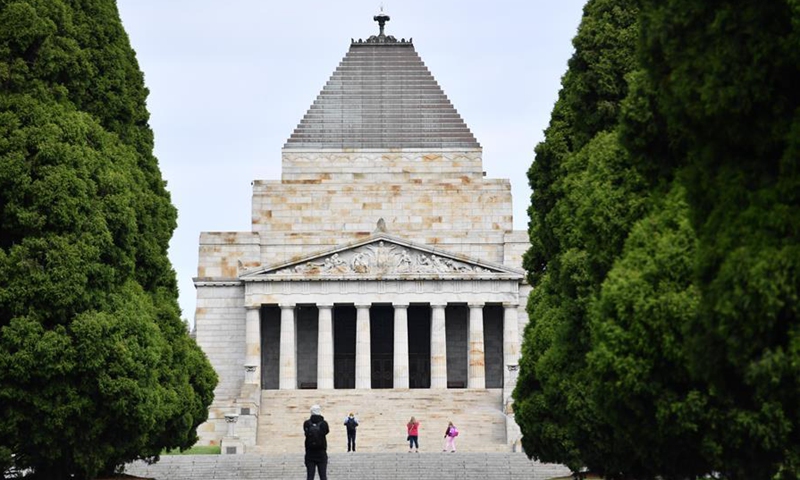
People wearing masks visit Shrine of Remembrance in Melbourne, Victoria, Australia, on Oct. 19, 2020. After more than three months of lockdown, metropolitan Melbourne moved from second step to third step of restrictions, and regional Victoria continues in third step with further easing of restrictions from midnight of Oct. 27. The whole state recorded zero new COVID-19 infection and virus-related death for a second day in a row on Oct. 27. (Photo by Bai Xue/Xinhua)